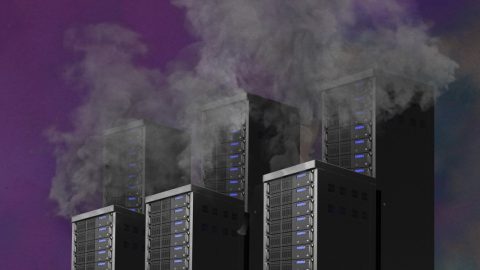
Boston Metal’s strategy is to try to make the transition as digestible as possible for steelmakers. “We won’t own and operate steel plants,” says Adam Rauwerdink, who heads business development at the company. Instead, it plans to license the technology for electrochemical units that are designed to be a simple drop-in replacement for blast furnaces; the liquid iron that flows out of the electrochemical cells can be handled just as if it were coming out of a blast furnace, with the same equipment.
Working with industrial investors including ArcelorMittal, says Rauwerdink, allows the startup to learn “how to integrate our technology into their plants—how to handle the raw materials coming in, the metal products coming out of our systems, and how to integrate downstream into their established processes.”
The startup’s headquarters in a business park about 15 miles outside Boston is far from any steel manufacturing, but these days it’s drawing frequent visitors from the industry. There, the startup’s pilot-scale electrochemical unit, the size of a large furnace, is intentionally designed to be familiar to those potential customers. If you ignore the hordes of electrical cables running in and out of it, and the boxes of electric equipment surrounding it, it’s easy to forget that the unit is not just another part of the standard steelmaking process. And that’s exactly what Boston Metal is hoping for.
The company expects to have an industrial-scale unit ready for use by 2025 or 2026. The deadline is key, because Boston Metal is counting on commitments that many large steelmakers have made to reach zero carbon emissions by 2050. Given that the life of an average blast furnace is around 20 years, that means having the technology ready to license before 2030, as steelmakers plan their long-term capital expenditures. But even now, says Rauwerdink, demand is growing for green steel, especially in Europe, where it’s selling for a few hundred dollars a metric ton more than the conventional product.
It’s that kind of blossoming market for clean technologies that many of today’s startups are depending on. The recent corporate commitments to decarbonize, and the IRA and other federal spending initiatives, are creating significant demand in markets “that previously didn’t exist,” says Michael Kearney, a partner at Engine Ventures.
One wild card, however, will be just how aggressively and faithfully corporations pursue ways to transform their core businesses and to meet their publicly stated goals. Funding a small pilot-scale project, says Kearney, “looks more like greenwashing if you have no intention of scaling those projects.” Watching which companies move from pilot plants to full-scale commercial facilities will tell you “who’s really serious,” he says. Putting aside the fears of greenwashing, Kearney says it’s essential to engage these large corporations in the transition to cleaner technologies.
Susan Schofer, a partner at the venture firm SOSV, has some advice for those VCs and startups reluctant to work with existing companies in traditionally heavily polluting industries: Get over it. “We need to partner with them. These incumbents have important knowledge that we all need to get in order to effect change. So there needs to be healthy respect on both sides,” she says. Too often, she says, there is “an attitude that we don’t want to do that because it’s helping an incumbent industry.” But the reality, she says, is that finding ways for such industries to save energy or use cleaner technologies “can make the biggest difference in the near term.”
Getting lucky
It’s tempting to dismiss the history of cleantech 1.0. It was more than a decade ago, and there’s a new generation of startups and investors. Far more money is around today, along with a broader range of financing options. Surely we’re savvier these days.








Recent Comments